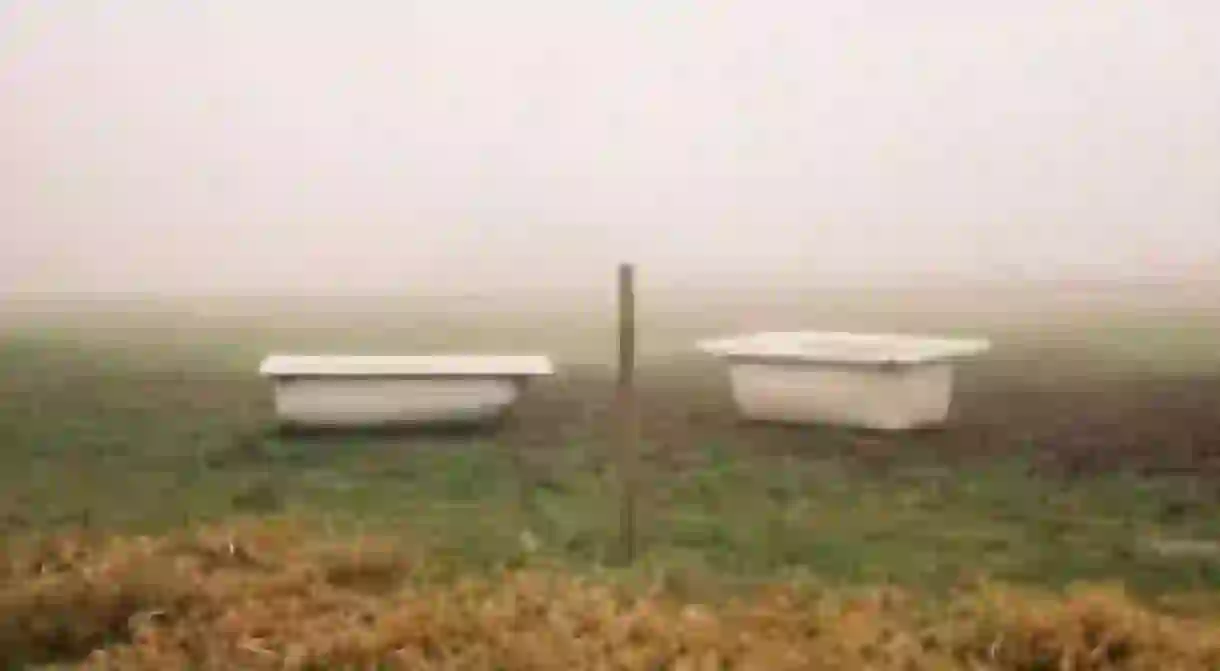A Cultural Look At Slovene Art In Bloom

Slovenia’s place at the heart of Europe has fostered a diverse cultural and artistic history, whilst also leading to involvement in countless conflicts and political subordination. Shelton Lindsay questions how far the artistic output of Slovenia reflects this tumultuous history.

How does one explore the art of a nation? Is it not reductive to arbitrarily group artists due to their place of birth? Yet we all speak of art in terms of national allegiance. Our history and our ideas find creative maturation in the catharsis of art and the cries of joy and tribulations of our nation state can also find themselves bedfellows with our artistic intentions. Art has always existed in a complex relation with nationality and culture, both reflecting and dissenting from the context of its birth.
This relation between nationhood and artistic practice is explored through the works of the modern Slovenian art scene, which juxtaposes a rich cultural and artistic pedigree with an adolescent nation state. As a nation, Slovenia is just over twenty years old, having officially declared independence on the 15th of January 1992.

For those interested in this Slovenian art scene, the UGM Art Gallery in Maribor offers a comprehensive introduction. It is home to 3,000 pieces of work by Slovenian artists from the 19th century to the present. Their impressive collection monitors and explores all of the major trends in Slovenian art from modernist paintings through to the emerging field of video installations.
The UGM Art Gallery’s 2012 exhibition Almost Spring: 100 Years of Slovenian Art offered a retrospective of the development of Slovenian art over the course of the long and often torturous journey to independence. Heralded as a constellation installation, Almost Spring brought together disparate art works in a variety of mediums in two separate but connected collections: XX.Century, and XXI. Century. Both look at the past as a source of inspiration and welcome the uncertain promises the future brings. This is particularly true in a country such as Slovenian where the memory of radical political shifts lurk in the cultural psyche. This disjointed, multi-room, multi-medium art instillation serves as an artistically curated realm onto itself, challenging our notions of art in relation to history.

Within the Almost Spring collections visitors will find work by mixed media artist Vadim Fiskin. Fiskin utilizes science and modern technology which he welds to his imaginative concepts in order to produce works which are part poetry, part science and which invite us to question the rigid distinctions we apply to both forms. Born in the USSR, in Penza, Fiskin currently lives and works in Ljubljana. He often works with light and shadows such as in his work Miss Christmas, which challenges the nature of perception by using shadow and light to give the memory of life to the mechanical.
When explored next to some of his previous work, such as Don Quixote Pact (pictured above left), which uses a wind turbine and five electric fans in a tableau that draws to mind the misguided hero who lends the project his name, we begin to understand Fiskin as an artist who appropriates our cultural, mechanical and artistic heritage and displaces it in order to yoke together new meanings.

His work within the Slovenian art scene has gone on to inspire a younger generation of artists whose work can also be found in the Almost Spring collection, such as photographer Peter Kostrun, whose minimalist and ethereal photographs call to mind the interplay between light and shadow that dominate much of Fiskin’s work. Yet Kostrun’s work seems to be more mythical in form, hovering at the edges of reality. His nearly otherworldly photographs beckon to us from a world we have hardly seen and yet somehow remember.
As with all nations it is impossible to summarize the type and character of the work that is being produced within Slovenia’s borders. But if one were to draw out assumptions one may say that Slovenian art shows a mutability of form and a playful attitude towards style. This element of the scene can be summed up in the work of Jasmina Cibic. A new and up coming artist, she uses mixed media instillations along side traditional art forms to challenge the ways we experience the staging of art. Her work For the Birds (2007) is a particularly interesting and haunting piece, as it fills a sanitized ceramic space with birds forever captured in flight, simultaneously symbolizing both escape, and imprisonment.













